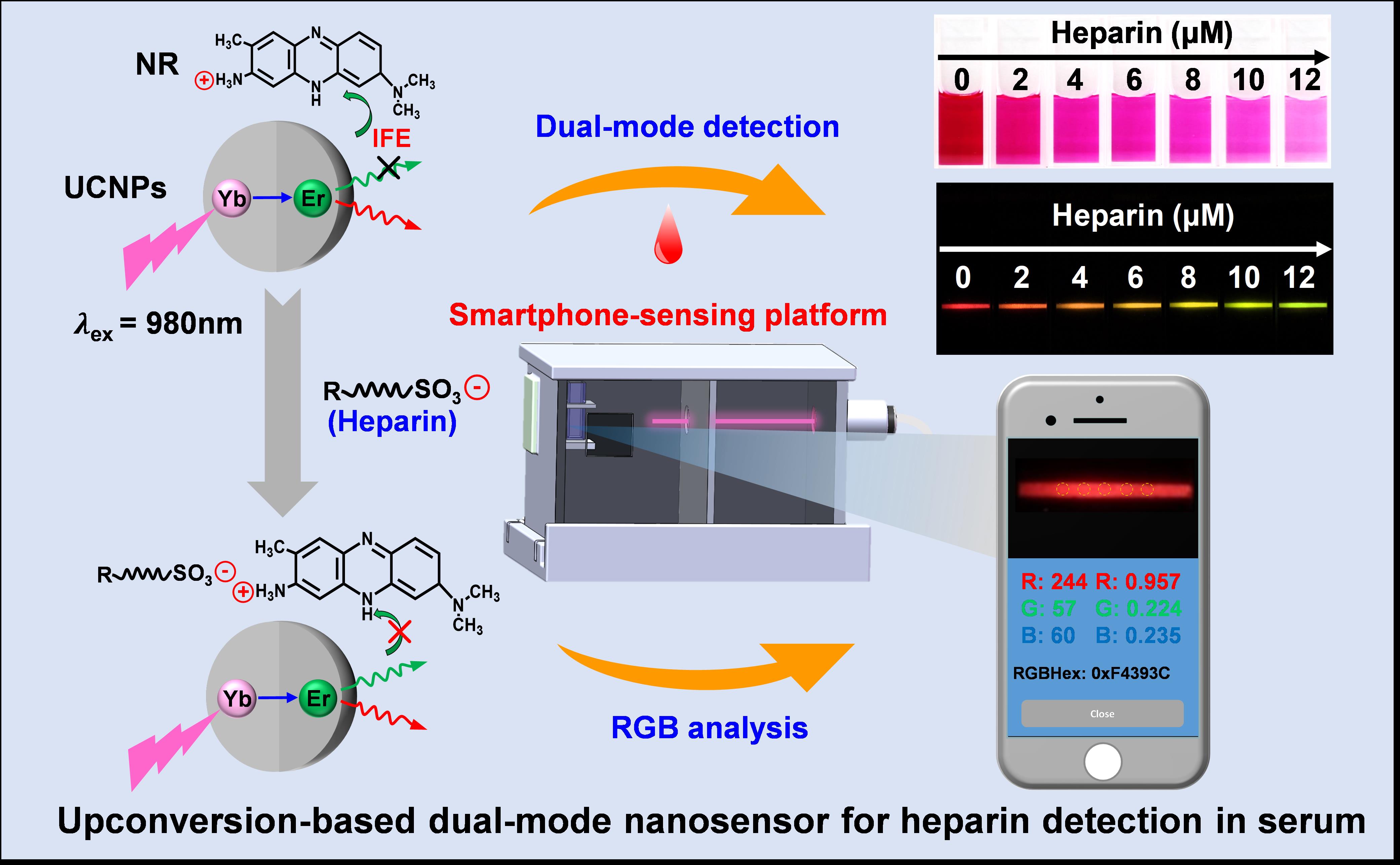
Recently, a research team led by Prof. JIANG Changlong from Institute of Solid State Physics, Hefei Institutes of Physical Science (HFIPS), Chinese Academy of Sciences, developed two nanosensors based on upconversion nanoparticles (UCNPs) to detect semicarbazide (SEM) and heparin, respectively.
These sensors are made of Lanthanide-doped up-conversion optical material, which helped researchers to convert low-energy near-infrared photons into high-energy short-wave visible photons.
SEM is a widely spread food contaminant that can cause cancer and hurt nerve. Traditional way is hard to construct an efficient and sensitive optical method to detect SEM due to lack of optical response.
This time researchers utilized phosphomolybdic acid as the specific identification element for SEM, which endow the sensor with high sensitivity and visual response to SEM in the range of 0-16 μM.
Heparin is a clinically important anticoagulant drug, which can easily lead to difficulty in coagulation under high concentration.
The new heparin sensor solved the problems of autofluorescence and photobleaching which are common in traditional fluorescence methods. It exhibited a fluorescence-colorimetric dual response optical behavior, with a detection limit of 0.1 nM in the fluorescence mode and 0.3 nM in the colorimetric mode.
Relying on long-wavelength excitation to eliminate autofluorescence, the nanosensor effectively improves the accuracy, and thereby expanding the clinical detection of heparin and related medical safety applications.
"The sensors are good for food safety and human health monitoring," said ZHU Jiawei, a Ph.D. student who took part in the research.
The research results were published in Analytical Chemistry and Sensors and Actuators: B. Chemical, respectively.

Figure 1. Schematic diagram of upconversion luminescent nanoprobe for detection of SEM in food. (Image by ZHU Jiawen)

Figure 2. Schematic diagram of upconversion luminescent probe for detection of heparin in serum. (Image by ZHU Jiawen)